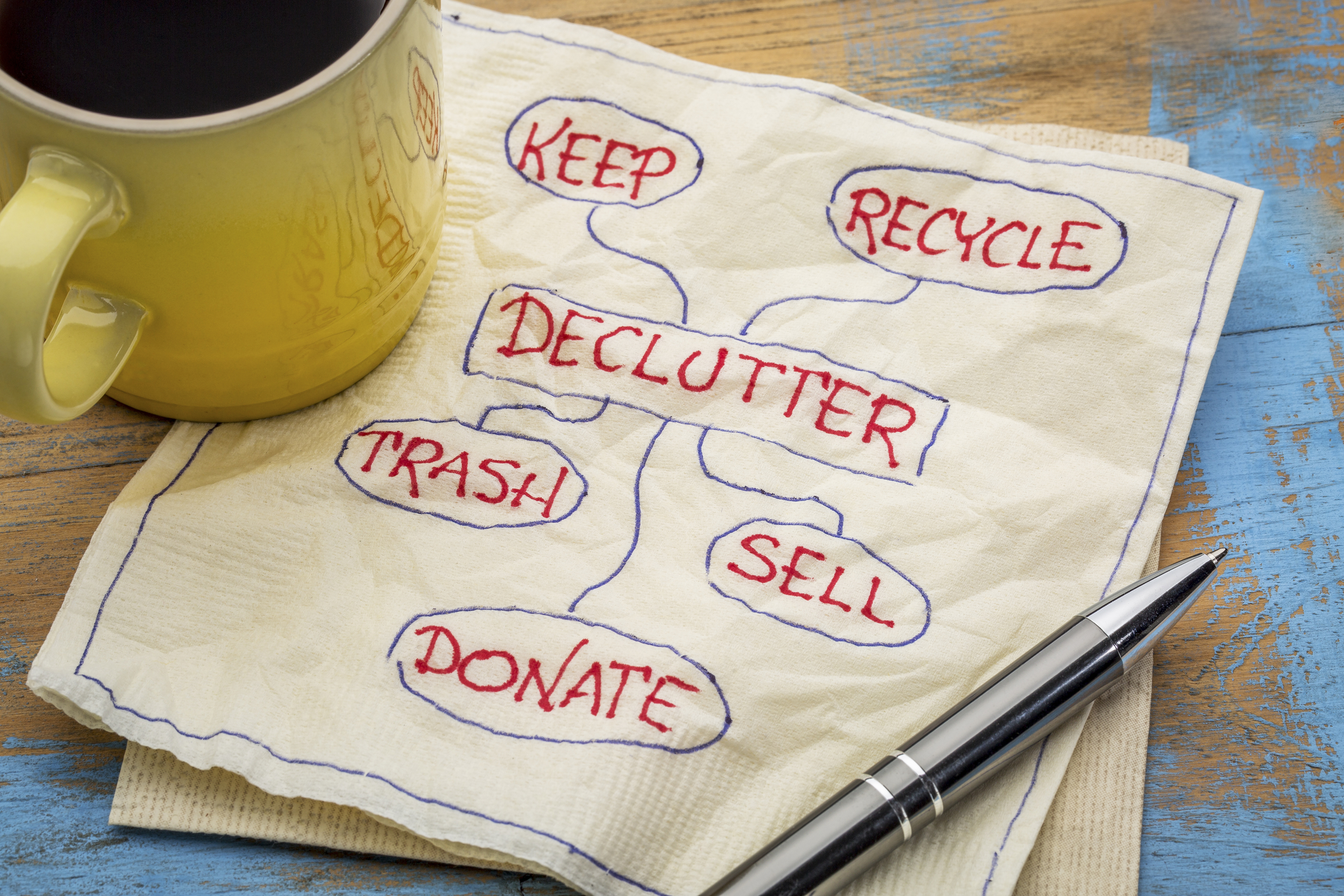For the last nine years, the HomeGain National Home Improvement Survey has been asking real estate professionals across the country the same question: What are the top 10 things a homeowner can do to get their home ready to sell?
And every year, the number one answer is: clean and de-clutter. In the latest survey, 99 percent of the real estate professionals queried ranked this task the most important. What’s more, they estimated that, for every dollar spent on the task, the homeowner would receive a whopping 403 percent return on their investment.
De-cluttering delivers big benefits to those who are not selling their homes, too. Studies show that living in a cluttered house is mentally stressful for the occupants and often leads to weight gain and other health problems.
So why do so many of us put off this important task? It’s hard work. It takes time. It’s physical. It’s emotional. And there are lots of decisions to make about what goes where, what gets tossed, and more. Worst of all, thinking about it makes it seem like an even bigger project than it really is—which is why experts say the best way to get started is to simply jump in.
The easy way to get started
The toughest part of getting organized is getting started. It’s too easy to say, “I’ll go through that closet later.” “I’ll get rid of those boxes later.” “I’ll donate those clothes later.”
Instead, replace “later” with “now.”
Grab a couple cardboard boxes and spend 90 minutes right now organizing one part of one room (a desk in your study, for example). Once you see that it’s not nearly as tough as you imagine, and actually feels satisfying and freeing, you’ll become energized and ready to take on even bigger organizing tasks tomorrow.
Here are some tips to keep you on track:
- Tackle one room at a time.
- Start with the easy stuff. Rounding up the things you know you want to toss, recycle, sell, or store.
- Finish the task you start. Don’t pull everything out of a closet, for example, and then stop for the day, leaving the mess for later. Finish organizing the closet.
- Get the whole family involved (these are important life lessons to pass along to your children).
- Let phone calls and other disruptions wait until you’re done for the day.
Deciding what to keep
Once you make your way through the things you know you don’t want any more (broken appliances, unused gifts, outdated electronics, store returns, etc.), then it’s time to focus on the items that are useful, but don’t get used very often. Experts suggest two strategies. Choose the one that works best for you, or try using them in combination:
- The 12-month test – If you haven’t used the item in the last year, get rid of it.
- The cardboard box drill – Put items you’re not sure about in a cardboard box and set it aside. Whatever gets pulled out and used over the next two months can stay. The things that don’t get rescued should be sent packing.
How to handle keepsakes
Now for the toughest decision of all: What to do with those trophies, mementos, greeting cards, photos, kids’ art projects—and all the other things that trigger strong memories and emotional reactions.
First, go through these things and make sure they’re still things you want to keep. Some items may now remind you of a time—or a person—you want to forget.
Spend no more than 30 seconds reviewing each item. If you allow yourself to start wandering down memory lane, your organizing work will come to a screeching halt.
Take photos of items that are bulky or hard to store—especially the kids’ artwork, which tends to fall apart over time, anyway. Once you’ve captured the item in a photo, let the original go.
If there are keepsakes you inherited from your parents or relatives that hold no sentimental value for you, it’s time to say goodbye.
Stop saving so many things for your children. No matter what they say now, your kids will most likely only be interested in a few key mementos when they’re older. Designate a single memento box for each child.
Other people’s belongings
You should not be storing anything that doesn’t belong to you and/or the other current members of your household. Give back things you’ve borrowed. Get rid of the belongings of ex-spouses, ex-boyfriends, and ex-roommates. Get tough with your adult children; your days of providing a roof for their belongings are over.
Working with a professional
A professional organizer can teach you the tricks of the trade, help you make tough decisions about what to keep and what to let go, and consult with you about the best storage systems. Hiring a professional is also a good idea if you’re having trouble getting started or sticking with it. Expect to pay around $50 to $90 per hour for this kind of help.
Some final words of advice
While you’re getting organized, do not allow yourself to buy any non-necessities. Groceries, yes. But say no to clothes, toys, electronics, sporting goods, and other feel-good purchases.
When you’re done organizing, a good rule of thumb is that for every new item brought into the house, an old one has to leave.
 Facebook
Facebook
 X
X
 Pinterest
Pinterest
 Copy Link
Copy Link



